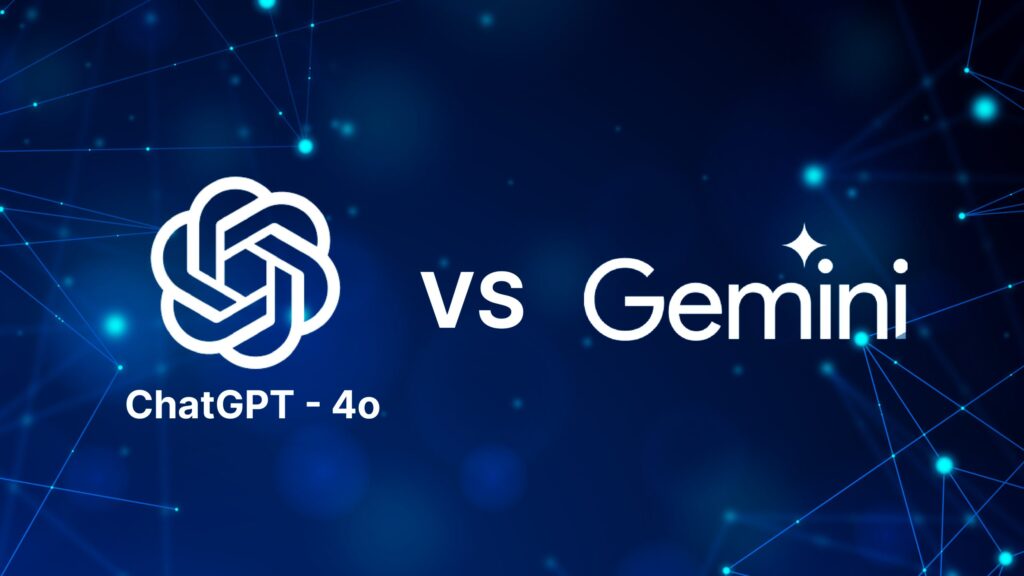
As artificial intelligence continues to evolve, the advancements in natural language processing (NLP) models have brought about significant improvements in performance, usability, and functionality. Among the latest contenders in this space are GPT-4o, GPT-4, and Gemini 1.5 ⭐. Each model represents a leap forward in AI capabilities, but how do they compare against each other? This article provides a detailed performance analysis of these three cutting-edge models.
Understanding the Models
Before diving into the performance analysis, it’s important to understand the basics of each model.
GPT-4o
GPT-4o is an optimized version of GPT-4, specifically designed to enhance efficiency and reduce computational costs without compromising on performance. It leverages advanced optimization techniques to deliver faster inference times and reduced resource usage.
GPT-4
GPT-4, developed by OpenAI, is the fourth iteration of the Generative Pre-trained Transformer series. It boasts improved language understanding, generation capabilities, and contextual awareness. GPT-4 is known for its versatility in handling a wide range of tasks, from text generation to complex problem-solving.
Gemini 1.5 ⭐
Gemini 1.5 ⭐ is a robust NLP model that aims to strike a balance between performance and resource efficiency. Developed with a focus on practical applications, it incorporates innovative architecture and training methodologies to achieve high accuracy and scalability.
Performance Metrics
To compare these models, we will evaluate them based on the following key performance metrics:
- Accuracy and Language Understanding
- Inference Speed
- Resource Efficiency
- Usability and Integration
- Scalability and Adaptability
1. Accuracy and Language Understanding
GPT-4o: GPT-4o maintains a high level of accuracy, comparable to GPT-4, despite its optimized nature. It excels in understanding and generating contextually relevant and coherent text across diverse topics.
GPT-4: GPT-4 is renowned for its superior language understanding and generation capabilities. It can handle nuanced language tasks with remarkable precision, making it a top choice for complex NLP applications.
Gemini 1.5 ⭐: Gemini 1.5 ⭐ also performs exceptionally well in terms of accuracy. While it may not match the absolute peak of GPT-4, it offers reliable and contextually appropriate responses, making it suitable for a wide range of practical applications.
2. Inference Speed
GPT-4o: One of the standout features of GPT-4o is its enhanced inference speed. Through various optimization techniques, it significantly reduces latency, making it ideal for real-time applications and scenarios where quick response times are crucial.
GPT-4: GPT-4, while powerful, can be resource-intensive and slower in comparison to GPT-4o, particularly in environments with limited computational resources. Its performance is robust but comes at the cost of higher latency.
Gemini 1.5 ⭐: Gemini 1.5 ⭐ offers a balanced inference speed, outperforming GPT-4 in scenarios where speed is critical but not matching the optimized efficiency of GPT-4o. It provides a middle ground that suits many practical applications.
3. Resource Efficiency
GPT-4o: Designed with efficiency in mind, GPT-4o excels in reducing resource consumption. This makes it a cost-effective option for organizations looking to deploy powerful NLP capabilities without incurring high computational expenses.
GPT-4: GPT-4 is resource-intensive, requiring substantial computational power and memory. This can be a limiting factor for its deployment in resource-constrained environments, although its performance justifies the cost for many high-stakes applications.
Gemini 1.5 ⭐: Gemini 1.5 ⭐ strikes a balance between performance and resource efficiency. It offers good accuracy and speed without the high resource demands of GPT-4, making it a practical choice for a broad range of use cases.
4. Usability and Integration
GPT-4o: GPT-4o’s optimized design simplifies integration into various systems. Its efficiency makes it easier to deploy and manage, especially in environments where computational resources are limited.
GPT-4: While GPT-4 offers excellent performance, its resource requirements can complicate integration, especially for smaller organizations. However, its extensive documentation and support from OpenAI help mitigate some of these challenges.
Gemini 1.5 ⭐: Gemini 1.5 ⭐ is designed with usability in mind, providing a straightforward integration process. Its balanced performance and resource efficiency make it accessible to a wide range of users, from small businesses to large enterprises.
5. Scalability and Adaptability
GPT-4o: GPT-4o’s optimizations enhance its scalability, allowing it to handle larger workloads efficiently. Its adaptability makes it suitable for diverse applications, from customer service bots to advanced research tools.
GPT-4: GPT-4 scales well but requires significant resources to do so. Its adaptability across various NLP tasks is unmatched, making it a versatile tool for many advanced applications, despite its higher costs.
Gemini 1.5 ⭐: Gemini 1.5 ⭐ offers excellent scalability and adaptability, capable of handling increasing workloads while maintaining performance. Its design makes it versatile for a range of applications, balancing high performance with resource efficiency.
Conclusion
The choice between GPT-4o, GPT-4, and Gemini 1.5 ⭐ ultimately depends on specific needs and constraints:
- GPT-4o: Best for environments where efficiency, speed, and cost-effectiveness are priorities. It offers high performance with lower resource demands, making it ideal for real-time applications and cost-sensitive deployments.
- GPT-4: Suited for applications requiring the highest accuracy and language understanding, where resources are not a limiting factor. Its robust capabilities make it a top choice for complex and high-stakes tasks.
- Gemini 1.5 ⭐: A balanced option that provides good performance, resource efficiency, and ease of integration. It is suitable for a wide range of practical applications, from small businesses to large enterprises.
Each model has its strengths and weaknesses, and the optimal choice will depend on the specific requirements of the application, available resources, and desired outcomes. As AI continues to evolve, these models will undoubtedly improve, offering even more refined solutions to the ever-growing demands of natural language processing.